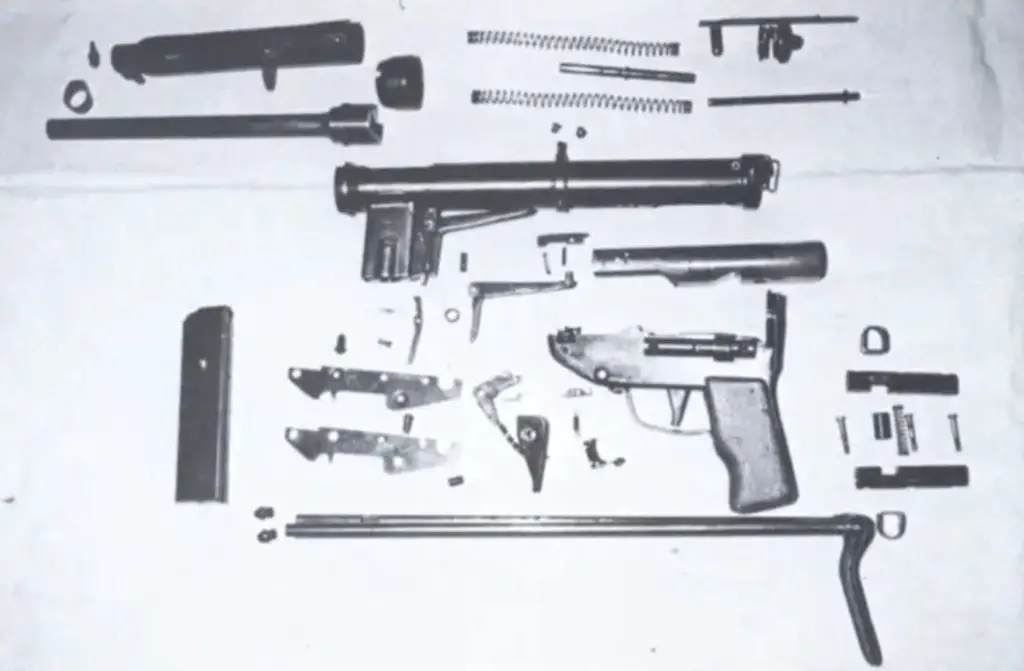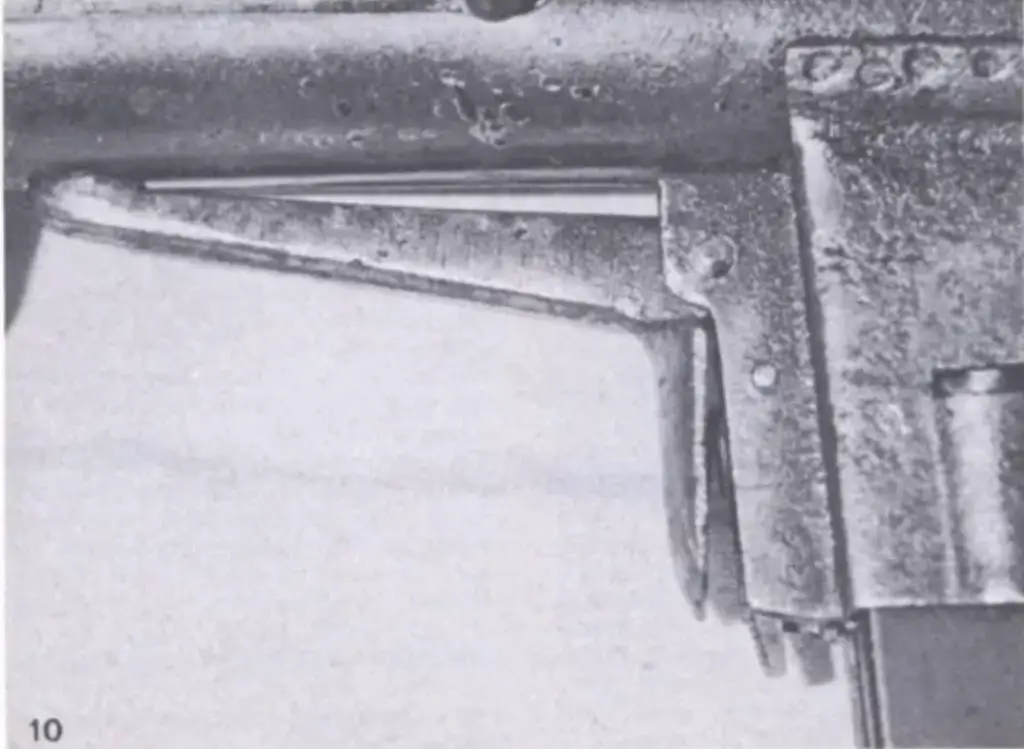The TZ-45 is unique for its innovative automatic grip safety, a first in the submachine gun history. This weapon, along with the FNAB 43, are late war entries in Italian submachine gun design.

Side view of the TZ-45.
History
Built towards the end of WWII, it can easily be put in the category of “last-ditch Axis weapons,” given its simplicity.
The letters “TZ” derive from the initials of the two designers, Tonon and Zorzoli. They designed this weapon in 1944 in collaboration with the Armaguerra Cremona arms factory. Due to the war situation, the production could not take place in the Cremona plant. Therefore, production commenced at the Fratelli Giandoso arms company located in Brescia.

The weapon broken down in its individual parts.
Use in World War Two
Production started towards the end of 1944, and all examples went to equip the armed forces of the Italian Social Republic. Initial distribution went to select units such as the X° MAS infantry division. However, it eventually became assigned to all combat units, especially for anti-partisan operations conducted by the Guardia Nazionale Repubblicana (National Republican Guard) and the Brigate Nere (Black Brigades).
The few photographs available show the weapon in the hands of Black brigades’ militiamen or captured by anti-fascist partisans. It is possible that German units deployed in northern Italy also used this weapon.

Approximately 6,000 pieces were built, assembled, and distributed by the end of the war. The weapon fired the 9×19 mm parabellum cartridges, and the magazine held 40 rounds.
After WW2
After the war, the Allies tested the weapon, a common practice with all captured enemy firearms. They considered the gun outdated and of inferior quality. This evaluation is not surprising since the Allies regard it as obsolete and unreliable.
In the early 1950s, Burma purchased a license and ordered a modified variant of the TZ-45 into production. Produced on-site for Burma. This variant renamed the BA-52, remained in service with Burmese local armed forces until the early 1990s.
TZ-45 Automatic Grip Safety Function

A close up of the grip safety.
Most certainly the most peculiar feature of this gun is its grip safety system, which is unheard of on a submachine gun. In 1944-1945, apart from saving raw materials, the need for a simple and efficient manufacturing process had priority. Gun safety was not a real concern. However, the weapon designers managed to create a simple but effective secondary safety, which activated automatically. All other submachine guns possessed manual safety devices. This feature later influenced other submachine guns produced after WWII, like the Danish Madsen 16, the Czech ZK 476, or the Israelian UZI.
Conclusion
If you compare the weapon with other contemporary creations, the TZ-45 is undoubtedly not the best of its category. But considering the historical period, requirements, and production conditions, this weapon is far from poorly conceived. Indeed, in some respects, it is rather well made. Also, this weapon used the same magazines as the Beretta MAB 38, also widely used by RSI forces, thus facilitating ammunition logistics in the dire situation the Axis faced in 1944-1945.
Specifications
| Specification | TZ45 |
|---|---|
| Caliber | 9 mm |
| Total Units | 6,000 |
| Weight (Empty) | 7 lbs 3 oz (3.26 kg) |
| Effective Range | 110 yards (100 m) |
| Barrel Length | 9 in (229 mm) |
| Length | 33.5 in (851 mm) |
| Action | Blowback |
| Muzzle Velocity | 1,250 ft/s (381 m/s) |
| Feed System | 40-Round Detachable Box Magazine |
| Cartridge | 9×19 mm Parabellum |
Sources
forgottenweapons.com
militaryfactory.com
modernfirearms.com
TZ45, Sergio Zannol, diana-ARMI
